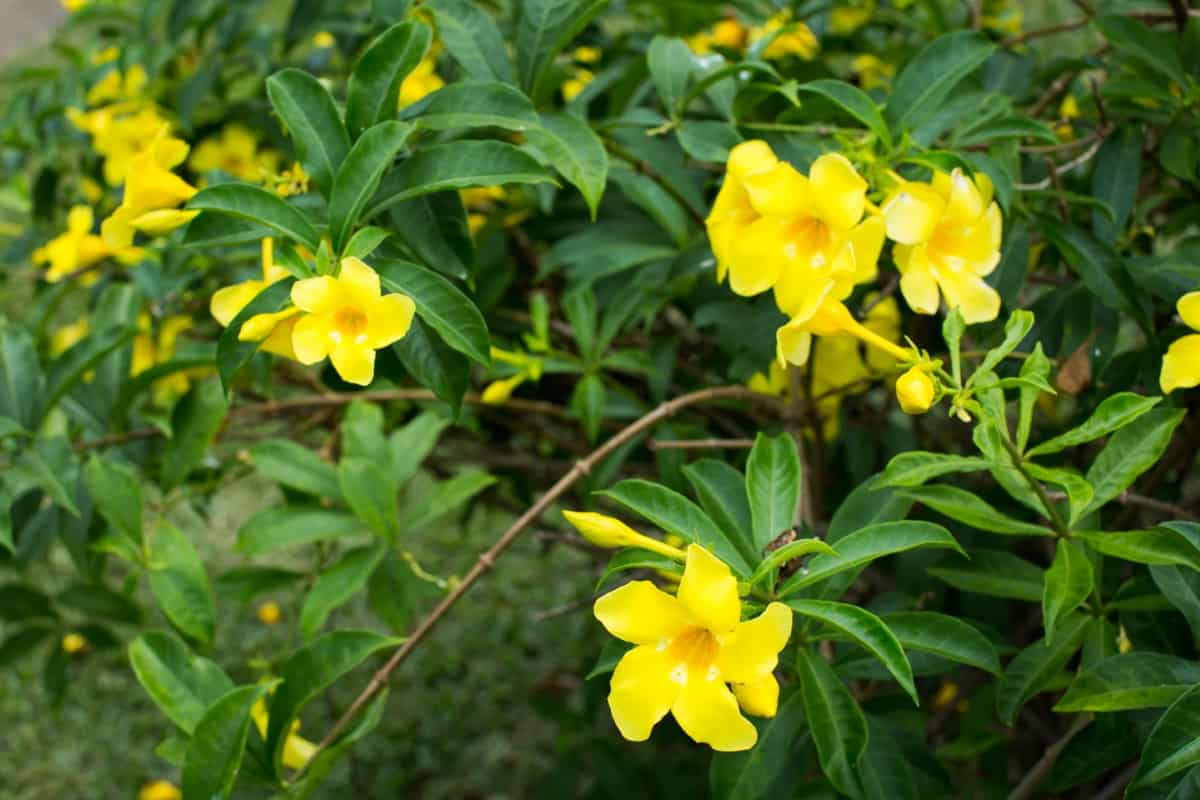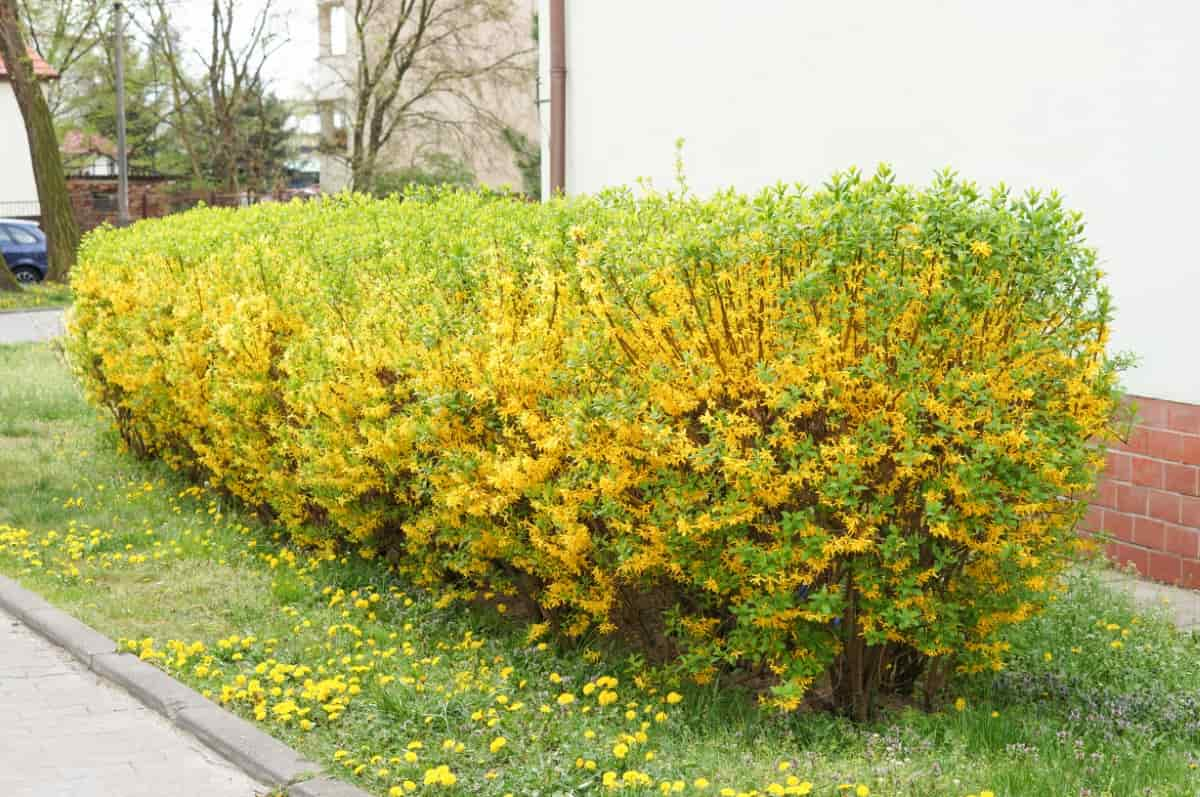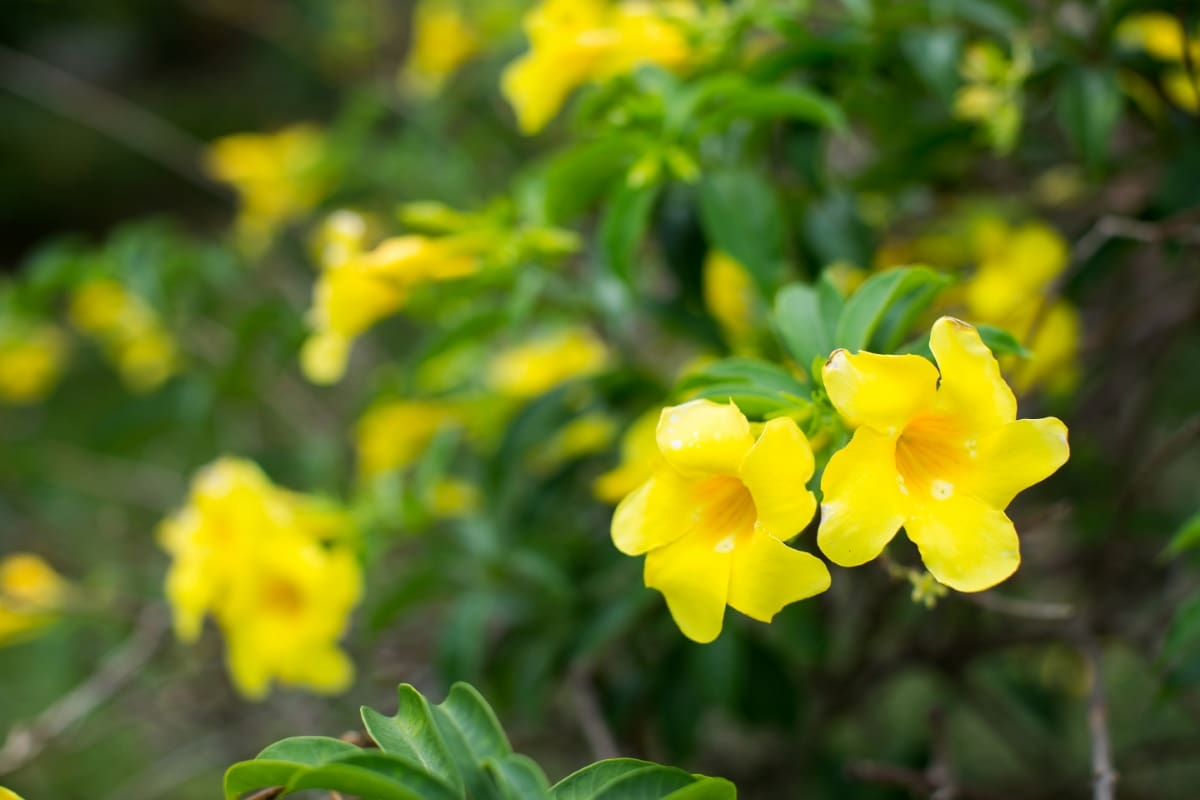Forsythia is a popular plant in gardens and landscapes for its radiant yellow blooms that herald the arrival of spring. Trimming Forsythia is crucial for optimal growth and ensuring a robust bloom in the subsequent season. So, when to trim back Forsythia? When is the Best Time to Trim Forsythia? When to Trim Forsythia Bushes and When to Trim Forsythia Hedge?

This article aims to comprehensively cover various inquiries related to Forsythia Pruning, including those concerning Forsythia Bush Pruning. Whether you’re pondering the Right Time to Prune Forsythia or wondering, “Can you trim Forsythia in the winter?” or “Can I cut my Forsythia to the ground?” or even keen on the specifics like pruning leggy Forsythia or pruning Forsythia into a tree, this guide is tailored for you.
Understanding the Growth Cycle of Forsythia: A Prerequisite for Pruning
Forsythia exhibits a unique growth cycle that mandates familiarity for effective pruning. This vibrant shrub bursts into a canopy of yellow blossoms in early spring, setting the stage for other flora to join the seasonal display. Post these blooms; it spends the remaining seasons cultivating stems and flower buds for the next spring. Recognizing this cycle aids gardeners in selecting the prime times for trimming to avoid hampering its natural growth or bloom potential.
The Importance of Timing: Factors to Consider Before Trimming Forsythia
Timing is the linchpin in the process of pruning Forsythia. While Forsythia is relatively forgiving, improper trimming can lead to diminished blooms. The key lies in acknowledging that Forsythia’s flowers appear on the previous year’s growth. Hence, pruning soon after blooming ensures the plant has ample time to develop new stems and flower buds for the following spring without risking the upcoming bloom.
Early Spring: Optimal Period for Pruning Forsythia
As spring heralds, Forsythia is a precursor with its luminous yellow blooms. After this bloom fest; the early spring phase becomes optimal for pruning Forsythia. By trimming during this phase, gardeners enable the shrub to redirect its energy towards robust growth throughout the year, fostering a solid foundation for the ensuing year’s bloom.
Post-Bloom Period: Trimming Forsythia to Promote Healthy Growth
Once Forsythia completes its blooming cycle, the post-bloom period becomes pivotal for trimming Forsythia. This period immediately succeeds the bloom and is ideal for assessing the Forsythia Bush or Hedge and removing old, woody stems. This process rejuvenates the shrub, facilitating newer, healthy growth and ensuring vibrancy in the following year’s flowering.
In case you missed it: Best Time to Trim Oak Trees: When and How to Prune, Methods, and Strategies

Late Winter: Preparing Forsythia for the Growing Season Through Pruning
While it might seem contrary to prune during the cold, the late winter presents a window for preparing Forsythia for the forthcoming growing season. By now, one might wonder, “Can you trim Forsythia in the winter?” Yes, and doing so aids in the removal of any damaged or diseased branches that could hamper its spring performance.
Dormant Season: Maximizing Pruning Benefits for Forsythia
In the dormant season, when the Forsythia is at rest, it’s a favorable time for pruning. This period allows for easily identifying branches, whether they’re leggy, out of place, or excessive. Maximizing pruning benefits during this season can play a pivotal role in Forsythia’s growth trajectory, enhancing its appearance and health.
Avoiding Flower Bud Loss: Guidelines for Pruning Forsythia
It’s of utmost importance to prune Forsythia judiciously to prevent the inadvertent removal of flower buds, which would curtail the next season’s bloom. The axiom is simple: the more buds retained, the more profuse the bloom. Hence, always be wary of over-pruning and prioritize preserving as many healthy buds as possible.
Assessing Damage and Disease: When to Trim Forsythia for Restoration
A vigilant eye can detect the early signs of damage or disease in a Forsythia shrub. Forsythia may exhibit stunted growth or discoloration due to pests, environmental conditions, or infections. In such cases, it becomes imperative to trim affected areas promptly. By doing so, the plant can redirect its energy to healthier parts, ensuring long-term vitality.
Shaping and Controlling Size: Strategic Pruning of Forsythia
Strategic pruning is crucial for those aspiring to prune Forsythia into a tree or maintain a particular shape. While Forsythia naturally adopts a sprawling form, with attentive and consistent pruning, it can be molded to fit specific landscape designs, whether as a singular tree, a dense hedge, or a decorative shrub.
In case you missed it: Pruning and Trimming Techniques for Container Plants

Long-Term Maintenance: Regular Pruning Schedule for Forsythia
A regular pruning schedule ensures that Forsythia remains a perennial spectacle in the garden. This not only ensures vibrant blooms year after year but also aids in maintaining the plant’s health. Regular Forsythia Bush Pruning or trimming of a Forsythia Hedge, combined with periodic checks for diseases or pests, ensures this resplendent shrub retains its grandeur for years.
Striking the Balance: Over-Pruning vs. Under-Pruning Forsythia
One of the most significant challenges gardeners face when dealing with Forsythia is striking the right balance between over-pruning and under-pruning. Over-pruning Forsythia can lead to the plant losing its natural arching form and may also reduce blooms in the following season.
Conversely, under-pruning might lead to an unkempt appearance and render the Forsythia more susceptible to pests and diseases. It’s essential to take a measured approach: remove old, woody stems and any diseased or dead branches while ensuring the plant retains enough growth to flourish in the subsequent season. This equilibrium ensures that the Forsythia remains healthy while also looking aesthetically pleasing.
Adopting Specialized Techniques: Reviving Old Forsythia Plants
As Forsythia plants age, they might appear less vibrant, with fewer blooms and more woody stems. When faced with this scenario, the question often arises, “Can I cut my Forsythia to the ground?” The answer is yes but with caution. Rejuvenation pruning is a method wherein the entire plant is pruned significantly, typically to a height of 4-6 inches above the ground. This practice is usually carried out during late winter or early spring.
In case you missed it: Training and Pruning of Avocado Tree: Techniques for Trimming and Staking

Such drastic pruning might seem shocking, but it can breathe new life into old Forsythia plants, allowing them to grow back with increased vigor and vitality. However, it’s crucial to note that after such intensive pruning, one might not see blooms for the next season, but the sacrifice often leads to a more robust and lively plant in subsequent years.
Conclusion
Forsythia is a testament to nature’s brilliance, with its cascades of yellow blooms heralding the onset of spring. Yet, to maintain its vigor and splendor requires understanding and application of timely and effective pruning techniques.
Striking the right balance between over-pruning and under-pruning, rejuvenating older plants, and employing the proper tools and techniques are all instrumental in nurturing Forsythia to its full potential. By adhering to these guidelines and appreciating Forsythia’s growth cycles and nuances, gardeners can ensure this radiant shrub remains a centerpiece of their gardens year after year.
- Feed Your Flock for Less: Top 10 Tips to Save on Chicken Feed
- Ultimate Guide to Ossabaw Island Hog: Breeding, Raising, Diet, and Care
- Hatching Answers: The Top 10 Reasons Your Chickens Aren’t Laying Eggs
- Eggs and Economics: Breaking Down the Cost of Raising Backyard Chickens
- Defend Your Greens: Proven Methods to Keep Iguanas Out of Your Garden
- Ultimate Guide to Cinnamon Queen Chicken: A Comprehensive Guide for Beginners
- Ultimate Guide to California Tan Chicken: Breeding, Raising, Diet, Egg-Production and Care
- Ultimate Guide to Marsh Daisy Chicken: Breeding, Raising, Diet, and Care
- 10 Types of Chicken Farming Businesses You Can Start for Profits